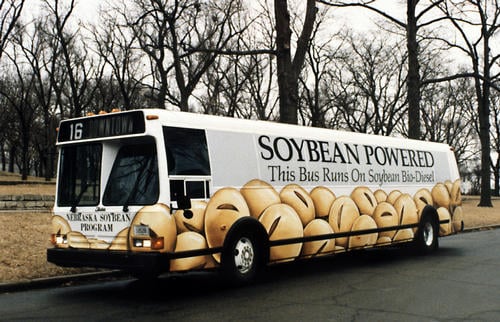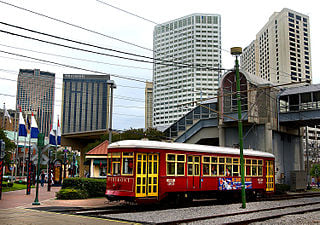There are transit systems and then there are transit systems.
Take, for example, the Cincinnati Bell Connector streetcar system. For Feb. 2019 ridership was 24,708.
This compares to the Kansas City, Missouri’s average 175,150 riders per month tally for its system in 2018. Could the difference in the number of monthly boardings between the two streetcar networks be that the Cincinnati Bell Connector charges fares and Kansas City’s doesn’t?
Which got me thinking, wondering if public transit fares should be waived as a means to encourage increased ridership for the purpose of further improving air.
Buses or streetcars
While buses are good, streetcars are better.
For purposes of this discussion, it is helpful to understand that while not all buses operate using electricity, all streetcar systems in the United States do. That’s a huge advantage where air quality considerations are concerned.
Which begs the question why there are not more of the streetcar systems present in places where the quality of the air is poor and where the presence of such, especially if service is free, could do much and go far to help improve local air.
In order to be effective, these networks would need to attract riders. And not just riders but those who currently commute by vehicles that pollute. We’re talking about a potential large number of riders.
Provide a quality service, procure and offer equipment that can accept multitudes of passengers (high-capacity trolley vehicles), do it at very attractive, affordable prices or for free as is the case in Kansas City, MO, take and get folks to where they want and need to go and do so in a timely manner and without negatively impacting the air, and that’s a formula for success.
In the case of Kansas City’s streetcar, the average 175,000 rides per month means a daily ridership average of right around 5,900, based on seven-days-per-week service.
That may not sound like a lot, I guess it depends on what your definition of “a lot” is. But, it’s also important to keep in mind how extensive the streetcar network is and just what kind of reach it has and whom it serves.
There has been an ongoing effort to bring streetcars to West Sacramento and Sacramento in the Golden State – California. There is no such proposal, plan in Fresno, my home. What a shame. However, there was a study in 2010 that looked into the possibility of such. In fact, FastTrack Fresno County devoted an entire Planning our future special “Streetcar Edition” newsletter just on streetcars. On the document’s front page, pictured is a Sacramento Streetcar rendering.
More relatedly, on page 3, in 2009 as it has to do with the Portland, Oregon streetcar network, ridership is 12,000 daily. That’s a little more than double Kansas City’s trolley ridership today. Total Portland streetcar mileage at that time was 4.8, also according to information on page 3.
But, no doubt the most relevant statistic is the number of vehicle miles traveled that can be reduced from streetcar use.
On page 6 in the same distribution in a table whose source is listed as Hovee Research, based on 7,248 households presumably with a combined total of 15,946 people who daily travel an average 21.79 miles by car, in the right environment with the correct sets of features, so-called “tools,” in place, could cut miles driven by more than half.
More to transit than streetcars alone
Streetcars being but one transit example, there are a host of others, the point here being that transit provides service to a good many people, either occasionally or regularly.
If there is a way to spark excitement enticing more people to make transit a regular part of their routines who might not otherwise be won over and if offering free service is just the (pun intended) ticket, especially on days and at times when air quality is poor; in other words, where it makes sense, it seems logical to me.
In terms of air quality improvement, something on this order could definitely make a world of difference.
This post was last revised on Jun. 3, 2020 @ 6:47 a.m. Pacific Daylight Time.
– Alan Kandel


>Which begs the question why there are not more of the streetcar systems
>present in places where the quality of the air is poor and where the presence
>of such, especially if service is free, could do much and go far to help improve local air.
In the 1930s and 40s, General Motors led a coalition with oil and tire companies to buy up municipal public transit systems and then dismantle them, explicitly to make people everywhere dependent on automobiles.
https://en.wikipedia.org/wiki/General_Motors_streetcar_conspiracy
Point taken.
Be this as it may, the streetcar in America today is making a comeback. Both new and relatively new streetcars trundle their way in such cities as Atlanta, Georgia; Dallas and El Paso, Texas; Cincinnati, Ohio (mentioned above); Detroit, Michigan; Milwaukee, Wisconsin; Oklahoma City, Oklahoma; Salt Lake City, Utah; Tucson, Arizona and Washington, D.C. and are winning back patronage. Forthcoming networks in Orange County, California and Tempe, Arizona propose to do likewise. Then there are those either proposed or planned for Los Angeles and Sacramento, California; for Minneapolis and for Saint Paul, in Minnesota and New York City, New York. There is much more on this here: https://en.wikipedia.org/wiki/Streetcars_in_North_America